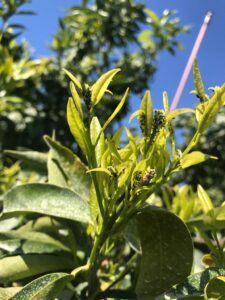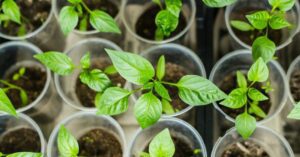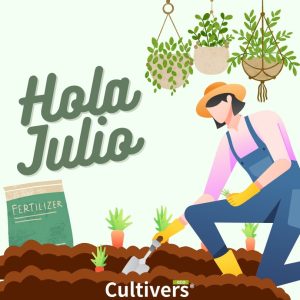Maintaining a healthy soil is the basis for strong and productive plants, whether in an orchard, garden or even in pots. Nowadays, there are many ways to nourish the soil in an environmentally friendly way, and one of the most effective is the use of soil conditioners.
These amendments, made from natural materials, provide a range of essential nutrients that help improve soil structure, stimulate plant growth and promote a healthier ecosystem.
What are flours and why are they important?
Flours are natural products obtained from the grinding of various materials, such as animal remains or rocks. When applied to the soil, they slowly break down, releasing nutrients that plants can gradually absorb. This means that they not only help plants grow in the present, but also improve soil quality in the long term.

Let’s look at some of the most common flours and how they can benefit us.
Blood meal
Blood meal is rich in nitrogen, one of the most important nutrients for plant growth. This element promotes the development of healthy, green leaves. In the short term, blood meal can give a quick boost to plants that need extra nitrogen, such as lettuce or spinach. In the long term, it improves soil organic matter and promotes microbial activity, which helps create a healthier, more balanced growing environment.
Main benefits:
- Rapid nitrogen supply
- Improved microbial activity
- Increase in organic matter
Bone meal
Bone meal is known to be an excellent source of phosphorus and calcium. Phosphorus is key to strong root development, flowering and fruiting, while calcium helps improve soil structure and prevents problems such as apical rot in tomatoes. Bone meal breaks down slowly, providing a steady supply of nutrients over the long term, making it ideal for long flowering plants.
Main benefits:
- Strengthens the root system
- Improves flowering and fruiting
- Provides calcium, improving soil structure
Feather flour
Feather meal is a slow-release source of nitrogen. It is made from bird feathers and, while it does not provide a quick boost like blood meal, its effects last longer. This makes it perfect for plants that require a steady supply of nitrogen throughout the growing season. It is also an excellent way to recycle waste from the poultry industry.
Main benefits:
- Slow nitrogen release
- Sustainability by recycling materials
- Gradual improvement of soil health
Fish meal
Fishmeal is a complete fertilizer, rich in nitrogen, phosphorus and potassium, as well as essential micronutrients. It also contains fatty acids that benefit soil microbial activity. In the short term, it can give an overall boost to plant growth, and in the long term, it helps improve soil fertility by providing organic matter and encouraging microbial life.
Main benefits:
- Complete fertilizer (N-P-K and micronutrients)
- Improves microbial activity
- Provides organic matter to the soil
Phosphate rock flour
Phosphate rock meal is a natural source of phosphorus and calcium, extracted from mineral deposits. Unlike chemical fertilizers, it decomposes slowly, which means that it feeds the soil over a prolonged period. This type of flour is ideal for improving soil fertility in the long term, promoting the formation of strong roots and healthy flowers.
Main benefits:
- Slow-release natural source of phosphorus
- Improves root health
- Calcium supply for better soil structure
Basalt rock flour
Basalt rock flour is rich in silicon and other trace minerals such as magnesium and iron. Although these nutrients are needed in small amounts, they play an important role in overall plant health. Basalt helps improve soil structure, facilitating water retention and promoting the activity of beneficial microorganisms. In the long term, it improves the soil’s ability to support plant growth in a sustainable manner.
Main benefits:
- Improves soil structure
- Provides essential trace minerals
- Promotes water retention and microbial activity
Short and long term: how these flours benefit the soil
The use of meals not only provides an immediate supply of nutrients, but also improves long-term soil health. These products help build a richer, more structured soil, full of beneficial microbial life.
Unlike chemical fertilizers, which are usually fast-acting and short-lived, organic meals break down slowly, providing a steady supply of nutrients. This means that by feeding the soil, you are also building a healthier, more sustainable ecosystem.
How to use them in orchards, pots or gardens?
Applying these flours is simple. You can mix them directly into the soil before planting or sprinkle them around established plants. In the case of gardens and pots, the amount should be adjusted according to the size of the container and the type of plant you are growing.

The key is not to overdo it: more does not always mean better. A balanced approach ensures that plants get what they need without causing excess nutrients that can damage roots.
[/et_pb_text][/et_pb_column][/et_pb_row][/et_pb_section]

